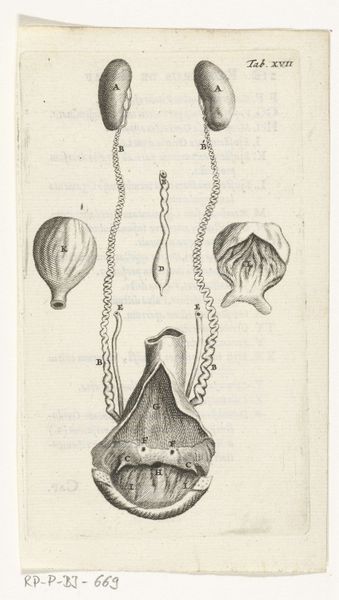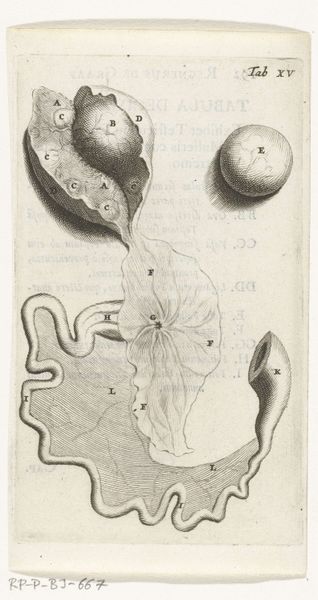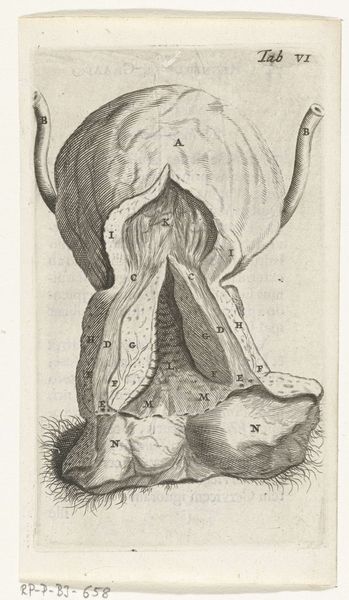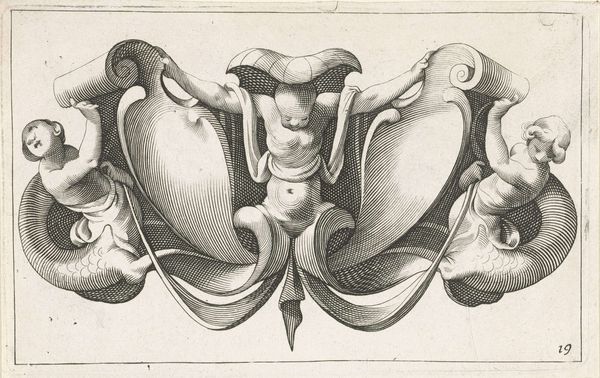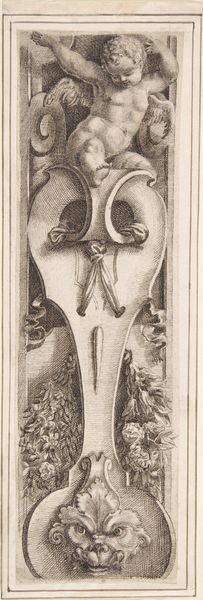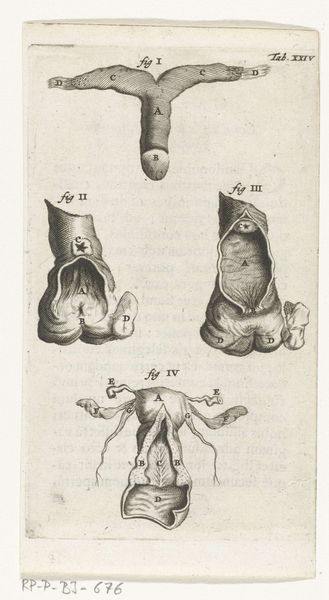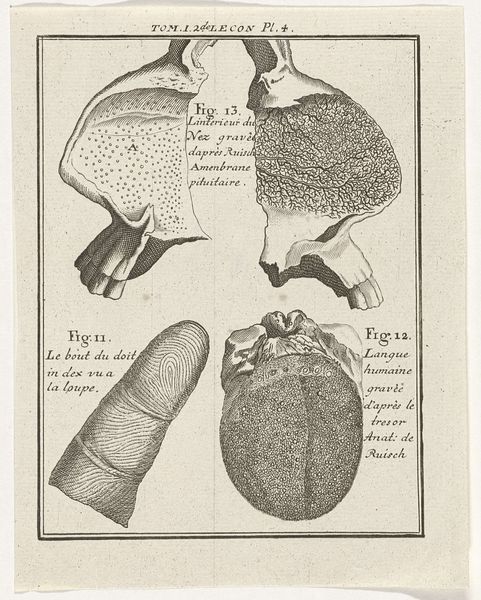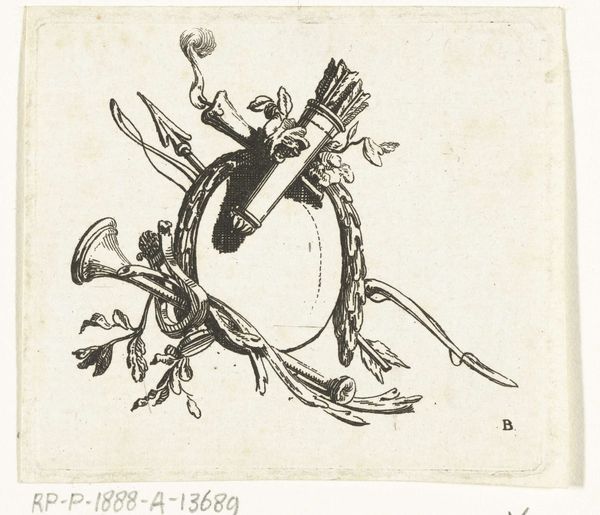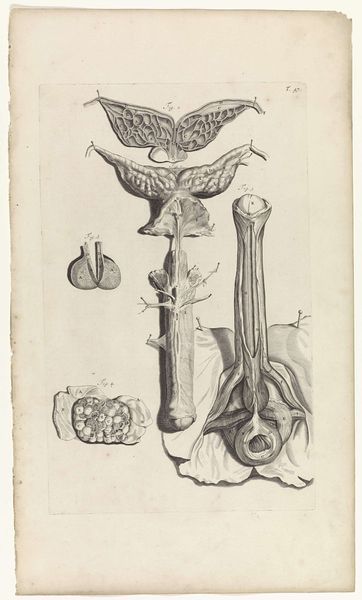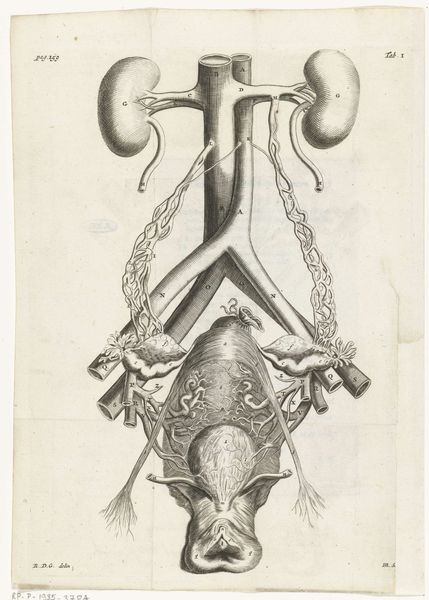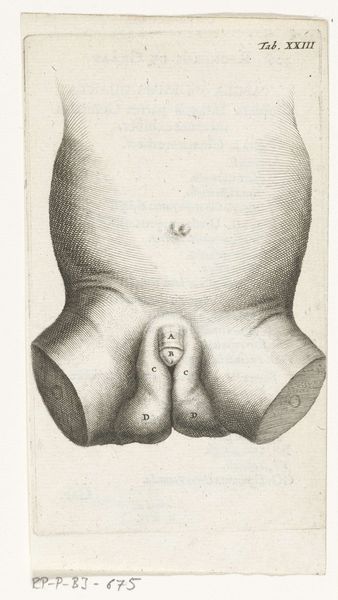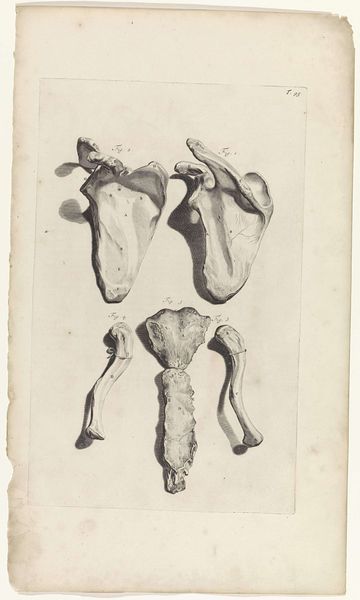
drawing, print, engraving
#
drawing
#
baroque
# print
#
pen sketch
#
old engraving style
#
figuration
#
pen work
#
engraving
#
erotic-art
Dimensions: height 140 mm, width 80 mm
Copyright: Rijks Museum: Open Domain
Editor: So, here we have "Prints of the Female Reproductive Organs," a 1672 engraving by Hendrik Bary, currently at the Rijksmuseum. I must admit, it's rather clinical and… well, anatomical. How would you interpret this image, focusing perhaps on what it meant to viewers in the 17th century versus today? Curator: What strikes me immediately is the tension between objective observation and symbolic representation. While seemingly a straightforward depiction of the female reproductive system, notice how Bary uses shading and detail. It invites not just scientific understanding, but a deeper contemplation of the body and its mysteries. Consider the weight of "erotic-art" as a tag – a lens through which we might reconsider modern aversions. Editor: "Mysteries," that’s interesting. So, is Bary also imbuing a certain cultural or symbolic meaning through these very detailed images? Curator: Absolutely. Anatomy itself carried significant symbolic weight in the 17th century, often linked to ideas about creation, fertility, and even mortality. Didactic and demonstrative imagery was deployed in service of greater ideas about one's relation to the Divine. What symbols of the feminine exist? Does this image complicate them or contribute to their construction? How? Editor: It hadn't occurred to me, but, now I do consider that in modern days, these topics can become embroiled in discourse regarding what should and shouldn't be expressed artistically or represented in public at all! Curator: Precisely! It speaks volumes about our shifting relationship with the body, sexuality, and the evolving symbolic meanings we attach to them. Consider that the image appears as "Tab X." Does that have any resonance to the present-day gaze on what is sexually taboo? Editor: Thinking about this image in the context of Baroque art makes so much sense now. Thank you. Curator: And thank you for helping to bring these often-hidden layers to the surface.
Comments
rijksmuseum about 2 years ago
⋮
In 1672, physician and anatomist Reinier de Graaf published his De mulierum organis about the female reproductive organs. The book contains detailed prints by Hendrik Bary, among them several of the vagina. De Graaf was the first to conclude that a foetus was the product not just of a man’s seed, but also of a woman’s egg. He discovered what he called blisters, which later became known as Graafian follicles.
Join the conversation
Join millions of artists and users on Artera today and experience the ultimate creative platform.

